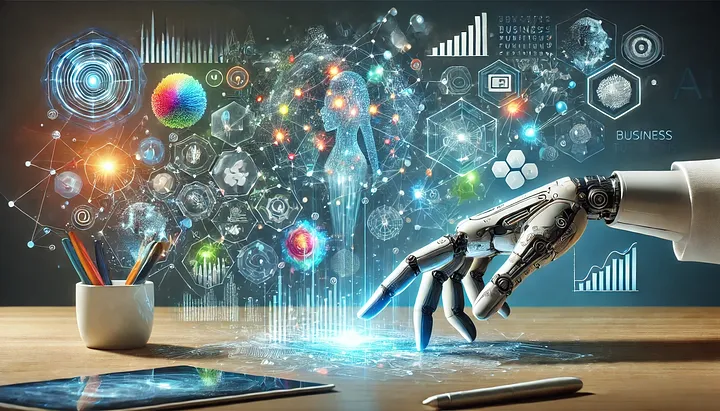Gen AI For Business: Make Every Employee As Smart As All of You
Ken H. Blanchard’s timeless wisdom, “None of us is as smart as all of us,” highlights the power of collective intelligence. However, the true potential of this concept has often been just out of reach, as fully tapping into the combined knowledge and resources of a team or organisation has, until now, been a challenging feat. This underscores not just the value of collaboration, but also the complexities involved in effectively unlocking and utilising the vast reservoir of collective experience and expertise.
Enter Generative AI (or Gen AI in short), the idea essentially relies on ingesting all possible knowledge and make it available to everyone to tap into, become smarter with all the information just a prompt away. ChatGPT from OpenAI does exactly that and so does other popular models out there. GPTs are essentially trained on general publicly available knowledge base and hence are able to perform better for general knowledge related tasks.
However, it has no idea about an organisation data and hence are not directly useful for internal contextual purposes. This knowledge gap is bridged with, what is called RAG (Retrieval Augmented Generation).
Retrieval-Augmented Generation (RAG)
RAG enhances the responses of Large Language Models (LLMs) by incorporating external, authoritative knowledge bases not included in their initial training data. This process ensures that the model’s outputs are not only based on its original training but are also informed by up-to-date and reliable external information sources. Retrieval-Augmented Generation (RAG) amplifies the inherent strengths of Large Language Models (LLMs) by integrating them with specialised domain knowledge or an organisation’s internal databases. This enhancement is achieved without the necessity of retraining the entire model. As a result, RAG offers a cost-efficient method for enhancing the relevance, accuracy, and applicability of LLM outputs across diverse scenarios.
One of the most talked use cases of Generative AI (or Gen AI) is chatbot for various scenarios (e.g., Customer Service). Chatbot is not a new concept but they have never been smarter, always provided a below-par satisfaction and most times not being able to handle complex queries. The prime reason of this has been that those chatbots were hardly augmented with required data. With the evolution Gen AI it is now possible to bridge that gap. Using techniques like RAG, GPT’s knowledge base can be extended. This is what will make it not only smarter but also reduce the probability of giving false information with confidence. With feedback loop incorporated this can only become smarter with each interaction.
How it works
The concept of RAG and it’s working is quite straight-forward to understand.
Without the domain-specific knowledge, any LLM or GPT would answer a domain-specific question based on the knowledge it has been trained on.
With Retrieval-Augmented Generation (RAG), as the name suggest, the user query (prompt) is first used to retrieve the information from an established domain-specific knowledge base, which is then passed with the query (prompt) to the LLM. This provides additional context the LLM which it did not know before, and hence it is able to better understand or comprehend the context of the query and respond with more accurate and relevant information.
Let’s understand this with a made-up example:
User: How many vacations do I get in a year?
GPT: It depends on the country of your employment, company policy, type of employment, union agreement, your contract and so on…..
With RAG in place, the same query would be augmented with knowledge retrieved from company’s data, so the conversation could potentially look like this:
User: How many vacations do I get in a year?
GPT: You are entitled for 28 days in a year. You have already taken 5 days off so far this year which means you still have 23 days left….
The above is just an example but a real one. With RAG we can augment the knowledge (read information) we want and enrich the response with comprehensive information and even predict the likely next set of questions of a user or customer.
Empower Every Employee with Collective Intelligence
Leveraging this technology paradigm, the knowledge base at your enterprise can be put together and make it available for everyone to use it. This is what will make every employee of your organisation as smart as all of your organisation.
How can organisations take advantage of this?
While the concept in paper is easier to understand but to achieve this at scale and productionise this will require strategic planning, understanding the data sources, preparing the data (knowledge), finding and implementing the right Vector Database and putting this altogether before pushing the prompt (query) to LLM.
However, this does not stop here as updating the knowledge base with up to date information is critical to keep it relevant and hence automated update of knowledge is important.
In addition, to improve the quality and relevancy of outputs it is essential to implement a feedback loop to fine tune prompt and knowledge retrieval.
My colleague, Thomas Schweitzer, wrote a detailed technical post on this, you can read it here.
Leveraging Generative AI and Retrieval-Augmented Generation for Enterprise Data Integration
If you’re intrigued by this and are keen to enhance productivity, efficiency, and offer exceptional customer and employee experiences, let’s start a conversation. The future of business is here, and it’s definitely powered by Generative AI.






